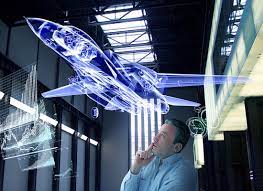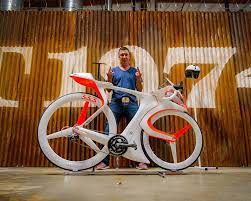
Transport Design
Transport design is a dynamic field in which individuals contribute to the creation of innovative and functional transportation solutions. A transport designer is a professional who specializes in the design and conceptualization of various modes of transportation, including automobiles, motorcycles, bicycles, trains, airplanes, boats, and other vehicles. These designers are responsible for creating the visual and functional aspects of transportation vehicles, considering factors such as aesthetics, ergonomics, aerodynamics, safety, and user experience. Their designs play a crucial role in shaping the appearance, functionality, and overall identity of vehicles in the transportation industry. Transport designers have the opportunity to shape the future of transportation by blending creativity with technical expertise, contributing to the evolution of vehicles that are both functional and aesthetically pleasing.
A career in transport design offers individuals an exciting opportunity to shape the future of transportation in India. With the increasing demand for sustainable and visually appealing vehicles, transport design professionals play a crucial role in designing aesthetic and functional aspects of vehicles and transportation systems. By combining technical skills, creative expertise, and a passion for transportation, individuals in this field can contribute to the growth and development of India's transport industry.As an emerging field in India, transport design offers exciting opportunities for individuals passionate about shaping the future of transportation.
Transport designers can work in various sectors within the transportation industry, including:
Automotive Design: Designing cars, trucks, SUVs, and other road vehicles for automotive manufacturers.
Aerospace Design: Working on the design of aircraft, from commercial planes to private jets.
Marine Design: Designing boats, yachts, and other marine vessels.
Rail Design: Creating designs for trains and railway systems.
Bicycle and Motorcycle Design: Designing bicycles and motorcycles, considering both form and function.
Role Desciption
A transport designer is responsible for the creation and development of various modes of transportation, including vehicles, vessels, and aircraft. Their role involves designing the aesthetics, functionality, and overall user experience of transportation vehicles. Here are some of the roles and responsibilities of a transport designer:
- Vehicle Conceptualization: Transport designers are involved in the initial stages of designing a vehicle, including defining its purpose, target audience, and required features. They create sketches, renders, and prototypes to visualize their concepts.
- Exterior and Interior Design: They are responsible for creating the visual appearance of the vehicle, considering factors such as aerodynamics, ergonomics, and brand identity. They design the vehicle's exterior, including shape, structure, and detailing, as well as the interior layout, materials, and user interface.
- Functionality and Safety: Transport designers ensure that the vehicles they design are functional, safe, and comply with relevant regulations. They consider aspects such as seating capacity, storage space, accessibility, crash safety, and structural integrity.
- Material and Finish Selection: They choose the appropriate materials and finishes for different vehicle components, considering factors like durability, weight, cost, and aesthetic appeal. This includes selecting materials for the vehicle body, interior surfaces, and various components.
- Collaboration and Communication: Transport designers often collaborate closely with engineers, manufacturers, and other stakeholders. They need to effectively communicate their design ideas and concepts, collaborate on technical aspects, and ensure that the final design is feasible and meets the requirements of all parties involved.
- Trend Analysis and Research: To create innovative and contemporary designs, transport designers stay updated on the latest trends, technological advancements, and consumer preferences in the transportation industry. They conduct research, analyze market trends, and participate in shows and exhibitions to gain insights and inspiration.
- Design Iteration and Improvement: Throughout the design process, transport designers constantly review and refine their designs based on feedback, testing, and evaluation. They consider manufacturing constraints, customer feedback, and functional improvements to enhance the vehicle's design and performance.
- User Experience (UX) Design: Transport designers focus on creating an optimal user experience for the vehicle occupants. This includes designing comfortable seating, intuitive controls, user-friendly interfaces, and a seamless overall experience for both passengers and drivers.
- Sustainability and Environmental Considerations: With increasing concerns about environmental impact and sustainability, transport designers are responsible for integrating eco-friendly features and technologies into their designs. They consider alternative fuel options, lightweight materials, energy-efficient systems, and emission reduction measures.
- Documentation and Specifications: Finally, transport designers create detailed technical drawings, specifications, and documentation that guide the manufacturing process. They provide manufacturers with accurate information regarding dimensions, materials, components, and assembly methods.
Eligibility
Route 1
- 10+2 with PCM
- B. Des Transport Design/ Vehicle Design/ Automotive Design
- M. Des Transport Design/Vehicle Design/ Automotive Design
Route 2
- 10+2 with PCM
- B. Tech any branch (Mechanical preferable)
- M. Des Transport Design/ Vehicle Design/ Automotive Design
Significant statistics
- You need to clear entrance exams after class 12th to get admission in design programs for example JEE, UCEED, NID, IIT etc.
- Focus on developing a strong foundation in design principles, engineering and material sciences
- Create a diverse and impressive portfolio that showcases your design skills, creativity and understanding of automotive design.
- To get a handsome job, an internship is an excellent option to get your first exposure in the automotive design industry.
Pros/Cons
Pros:
• Opportunities for creative expression and innovation
• High potential for career growth and professional development
• Chance to contribute to sustainable and eco-friendly transportation solutions
• Collaboration with diverse teams and professionals
Cons:
• Highly competitive industry
• Long working hours and tight deadlines
• Limited availability of specialized educational programs in India
• Relatively low awareness and recognition of transport design as a profession
Leading Professions
View All
Automotive Designer
These professionals spec...
6.0LPA

Aerospace Designer
Aerospace designers focu...
6.0LPA

Marine Designer
Marine designers are exp...
6.0LPA

Railway Designer
Railway designers specia...
6.0LPA

Public Transport Designer
Public transport designe...
6.0LPA

Bicycle Designer
Bicycle designers work o...
6.0LPA

Interior Transport Designer
Interior transport desig...
6.0LPA

Packaging Designer for Transport
Packaging designers in t...
5.0LPA
CAREER VIDEOS
Career Path
10+2 with PCM
1 Steps
Skills
Recruitment Area
Automobile and motorcycle manufacturers ,
Government transport departments ,
Automotive design studios ,
Railway and aerospace industries ,
Automobile component suppliers ,
Design consultancy firms ,
Research and development centers .
Recruiters
Hyundai ,
Ashok Leyland ,
Hero MotoCorp ,
Tata Motors ,
Bajaj Auto ,
Mahindra and Mahindra ,
Renault-Nissan Design Center ,
Maruti Suzuki India Limited ,
Honda Motorcycle and Scooter India Pvt. Ltd ,
TVS Motor Company .
Explore Colleges
Exams & Tests
Interested? Take the next step for this career
10+2 with PCM
- 1 Steps
Skills Needed
Exams and Tests
Recruitment Area
Automobile and motorcycle manufacturers ,
Government transport departments ,
Automotive design studios ,
Railway and aerospace industries ,
Automobile component suppliers ,
Design consultancy firms ,
Research and development centers .
Recruiters
Hyundai ,
Ashok Leyland ,
Hero MotoCorp ,
Tata Motors ,
Bajaj Auto ,
Mahindra and Mahindra ,
Renault-Nissan Design Center ,
Maruti Suzuki India Limited ,
Honda Motorcycle and Scooter India Pvt. Ltd ,
TVS Motor Company .



















